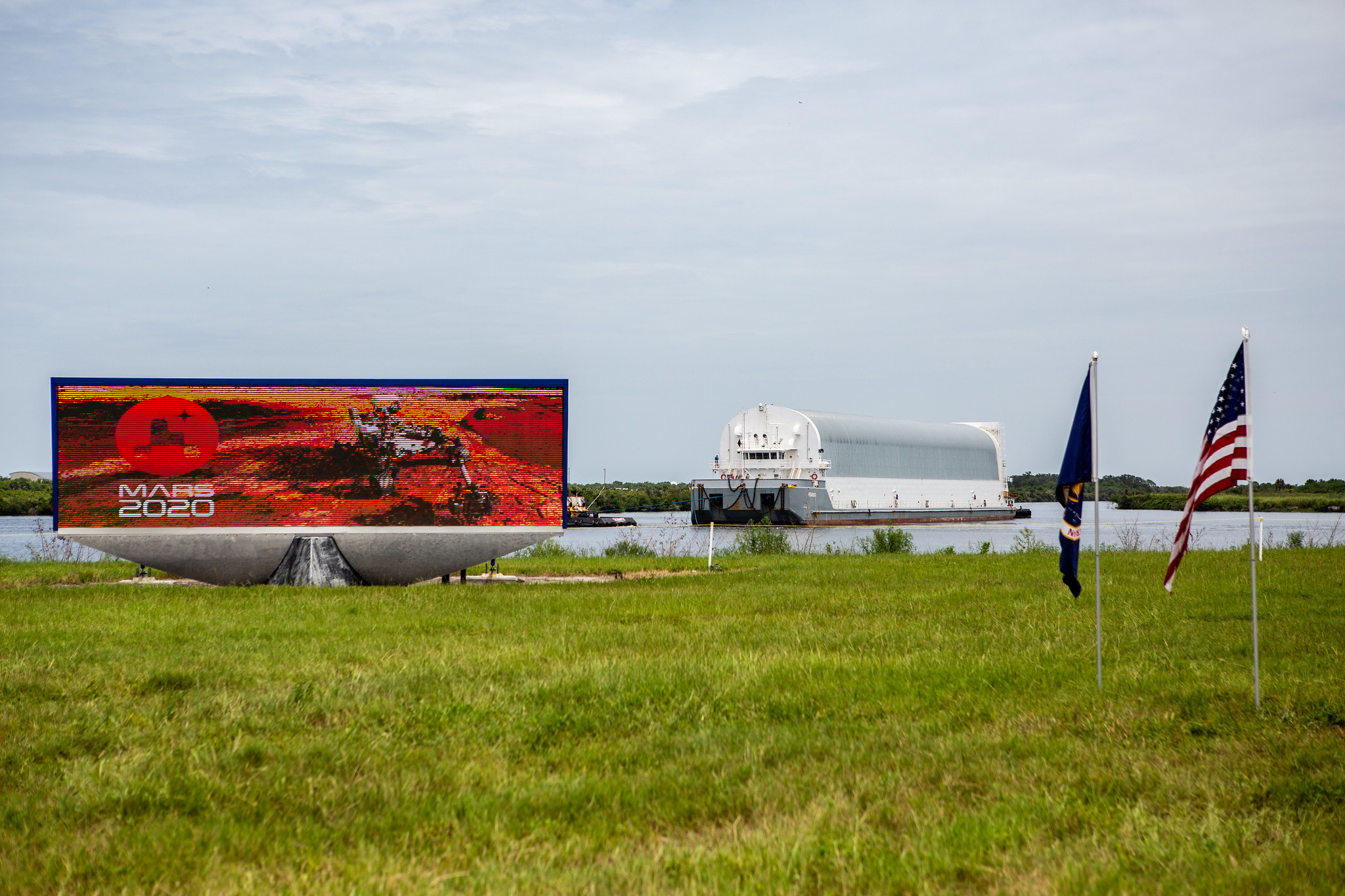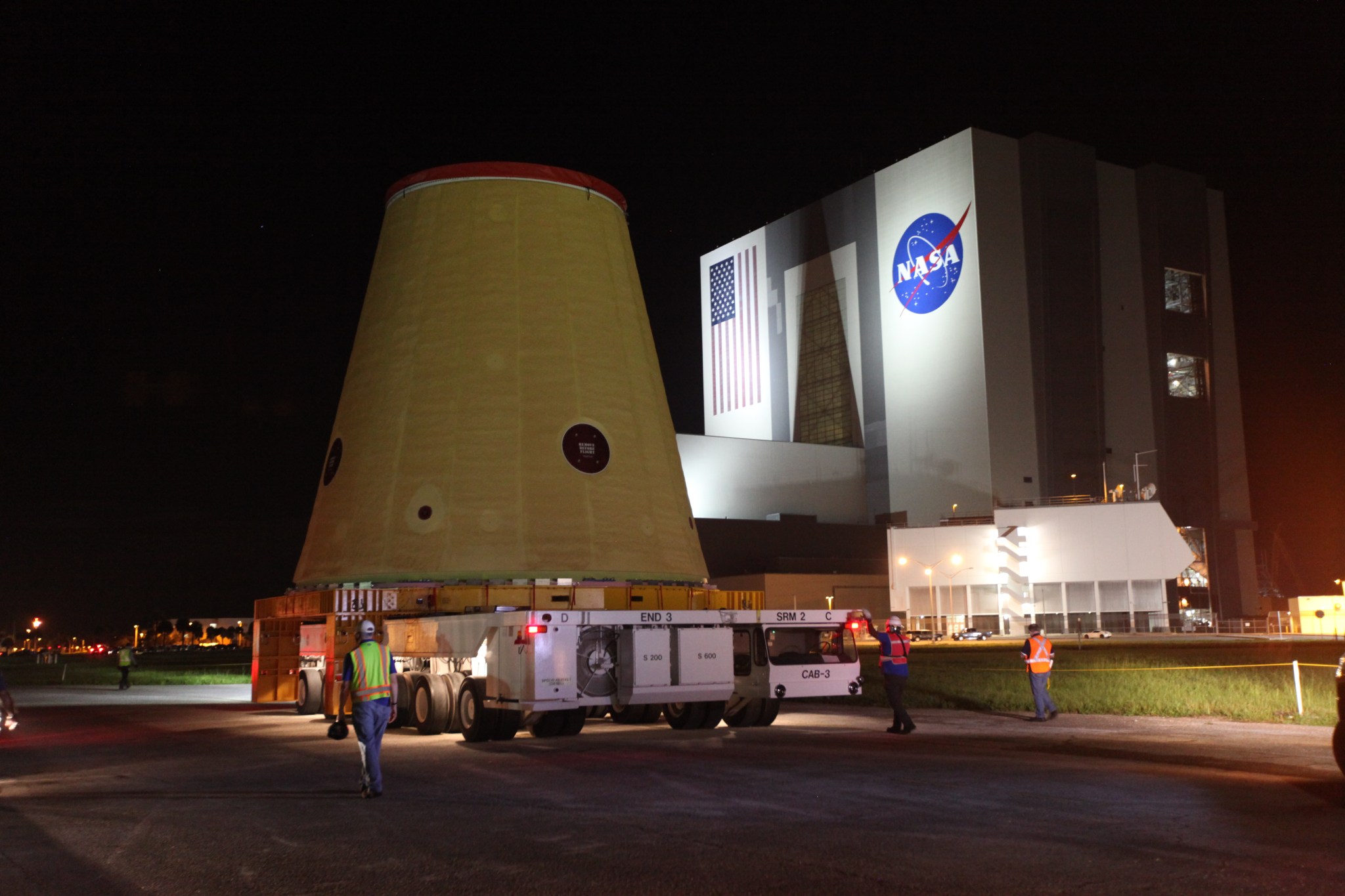
By Danielle Sempsrott
NASA’s Kennedy Space Center
The second to last piece of hardware for the Artemis I test flight around the Moon has arrived at the agency’s Kennedy Space Center in Florida. The launch vehicle stage adapter (LVSA) connects the core stage of NASA’s Space Launch System (SLS) rocket to the upper stage, called the Interim Cryogenic Propulsion Stage. The cone-shaped connector also helps protect the RL10 engine housed in the upper stage, which will provide the power necessary to leave Earth’s orbit and send the Orion spacecraft on its journey to the Moon.
“The launch vehicle stage adapter arriving to Kennedy is significant because we have almost all of the pieces of the rocket here as we get closer to launch,” said Allison Mjoen, operations project engineer with the Exploration Ground Systems program. “We have moved from planning into implementation, and soon the rocket will begin taking shape with stacking operations.”

Arriving at Kennedy’s Launch Complex 39 turn basin wharf, the LVSA traveled from NASA’s Marshall Space Flight Center in Huntsville, Alabama, to Florida on the agency’s Pegasus barge – a 310-foot-long vessel that has been modified to transport the largest rocket stage in the world: the SLS core stage. Technicians offloaded the LVSA and transported it to the Vehicle Assembly Building, where it will be stored until it is needed for stacking on the rocket. The core stage – made up of the forward skirt, liquid oxygen tank, liquid hydrogen tank, and the engine section containing the rocket’s four RS-25 engines – is the final piece of the rocket that will be delivered to Kennedy ahead of the Artemis I launch.
Under the Artemis program, NASA is working toward landing the first woman and the next man on the Moon by 2024. Artemis I will test SLS and Orion as an integrated system prior to crewed flights and is the first in a series of increasingly complex missions that will enable human exploration to the Moon and Mars. SLS and Orion, coupled with the Human Landing System and the Gateway in orbit around the Moon, will be the agency’s backbone of deep space exploration.


























